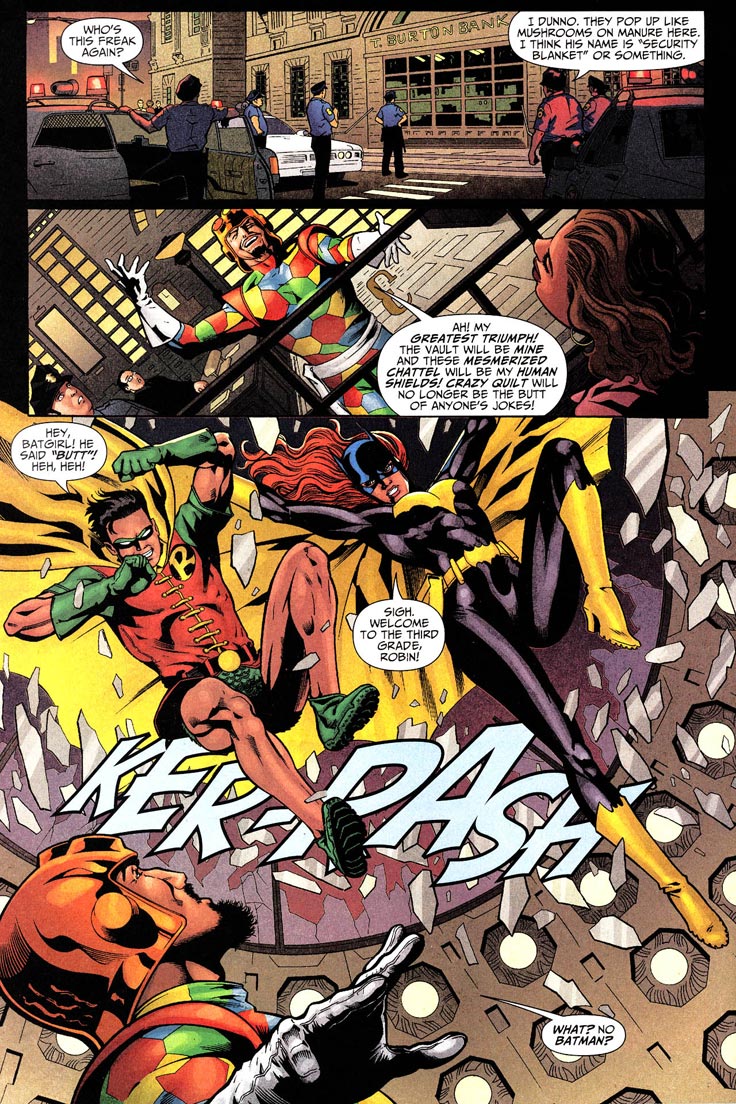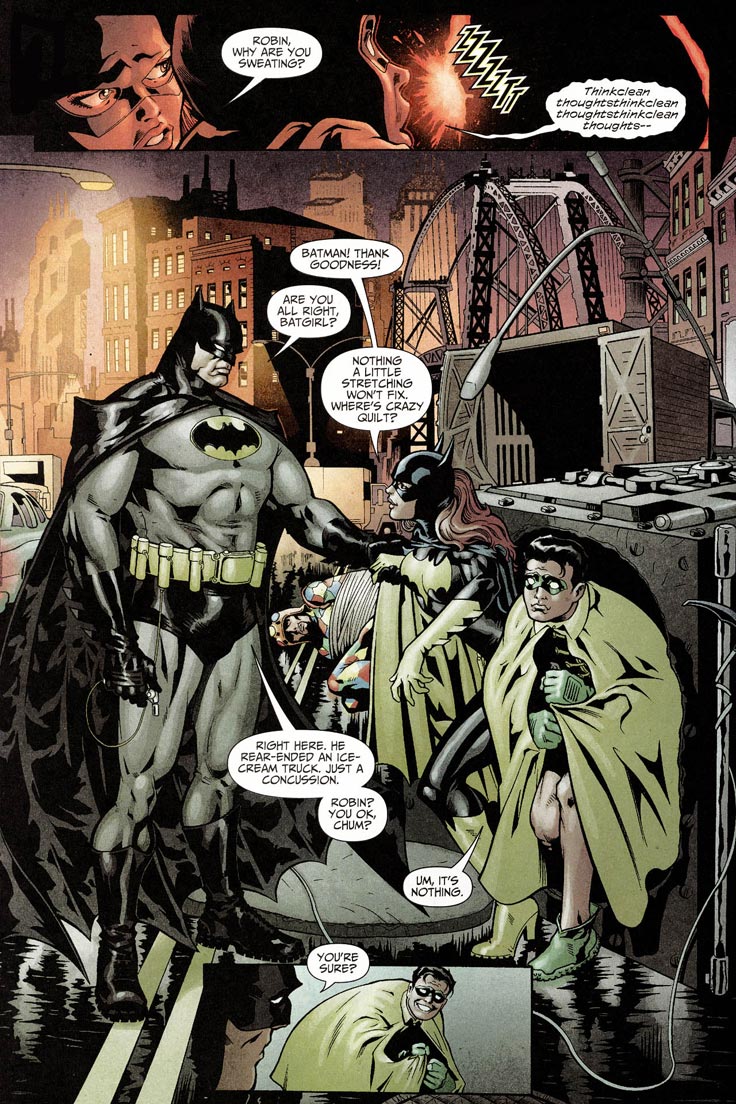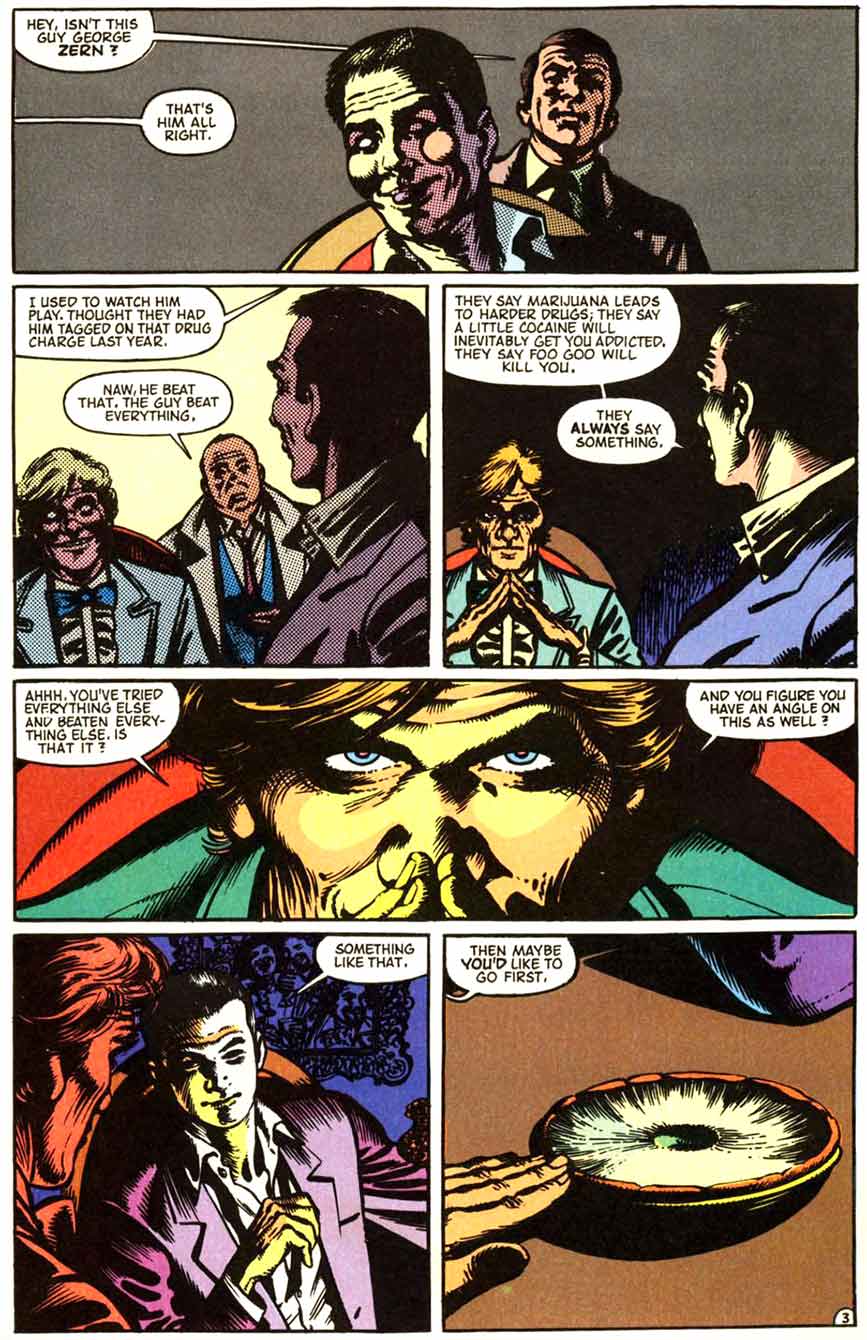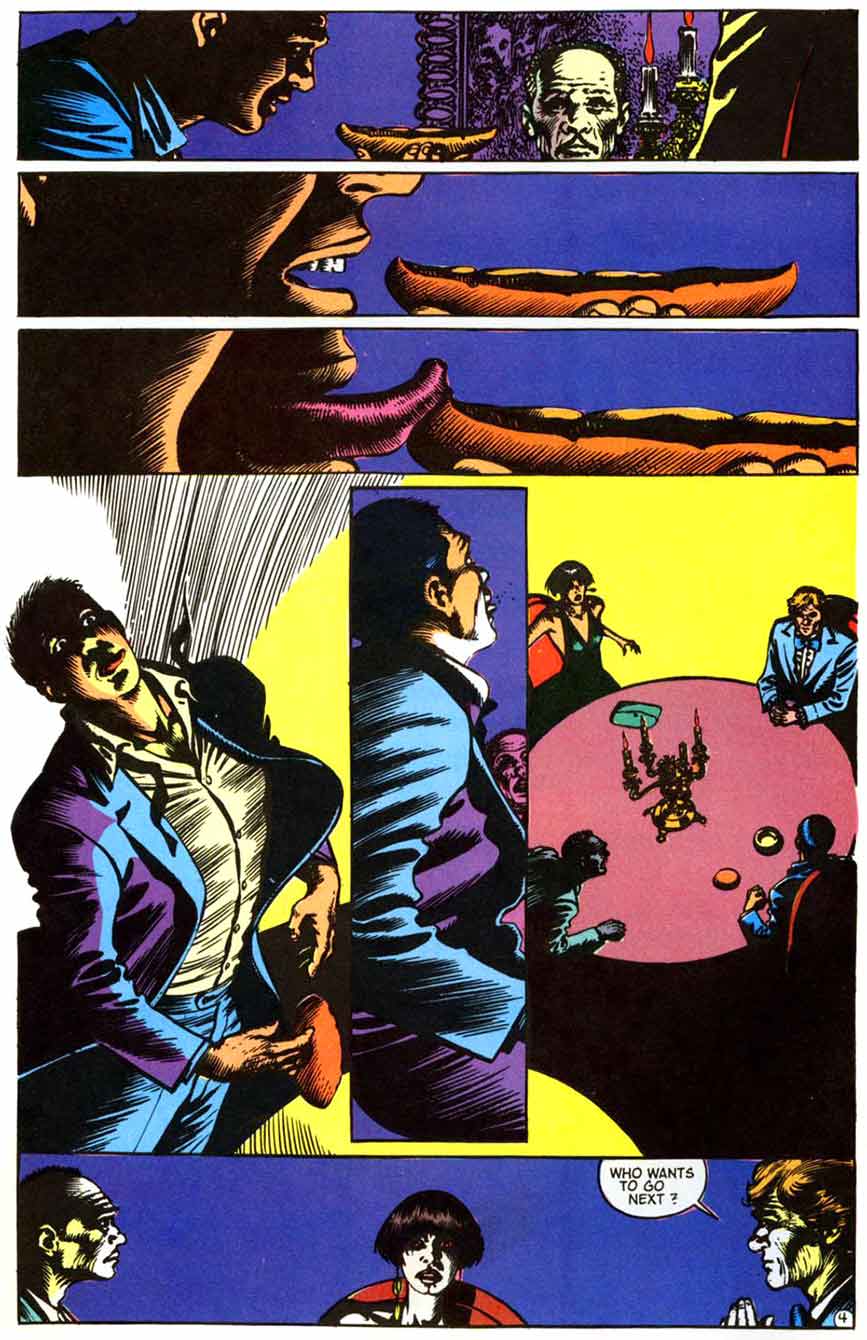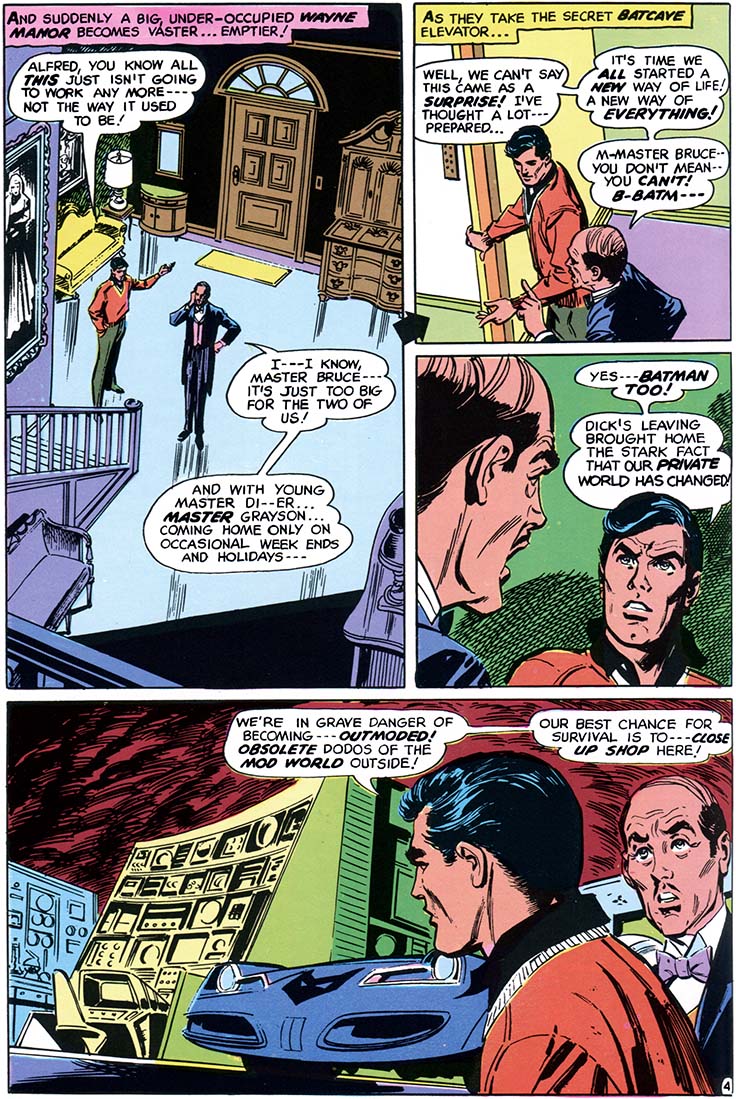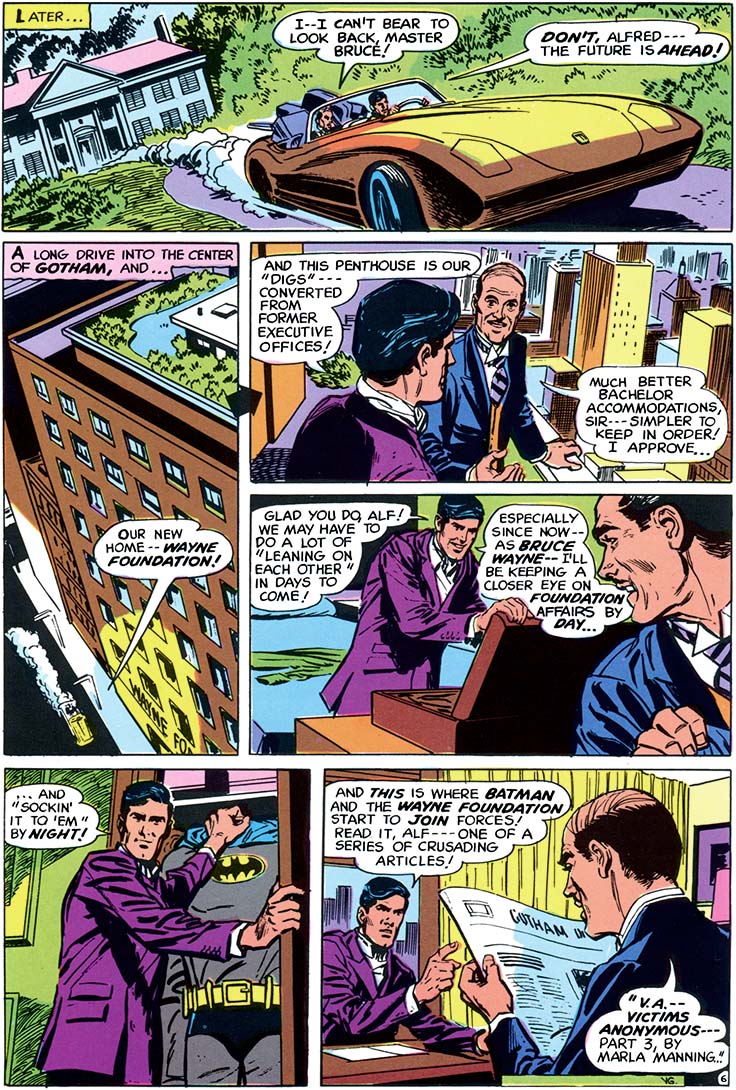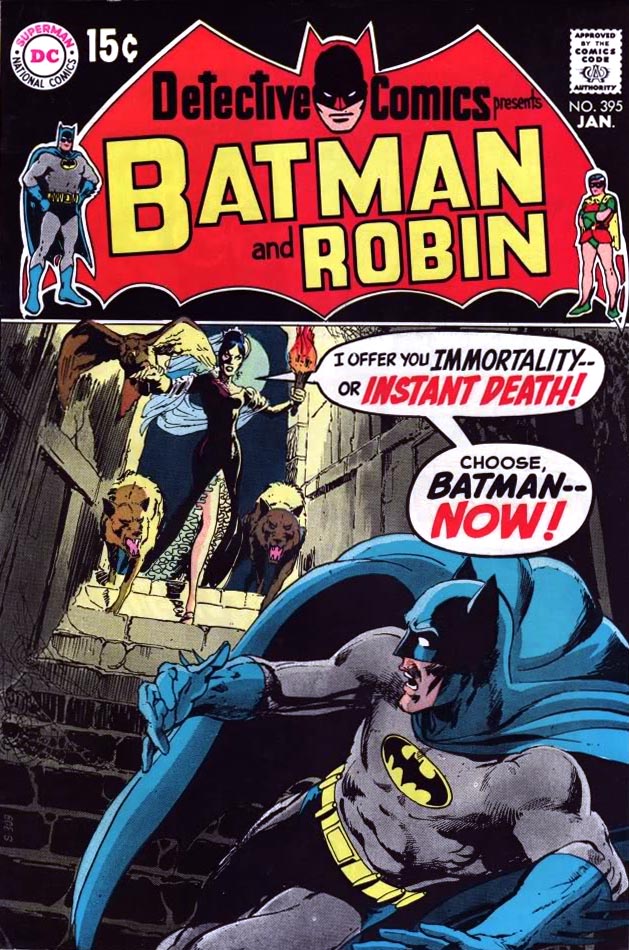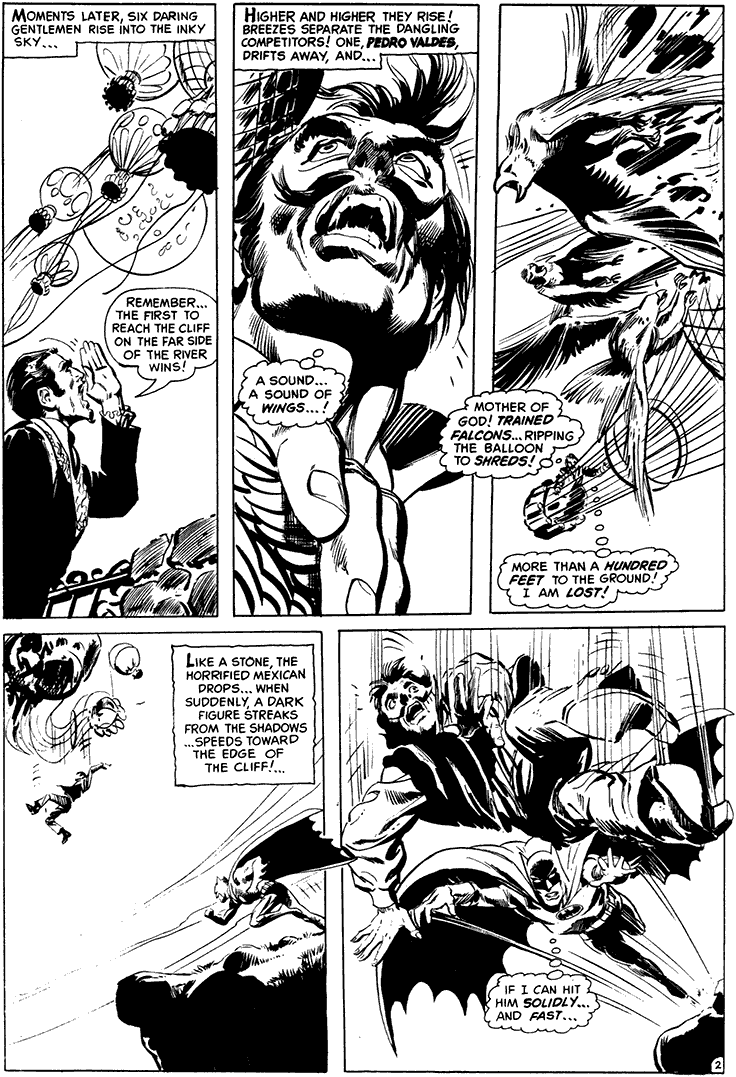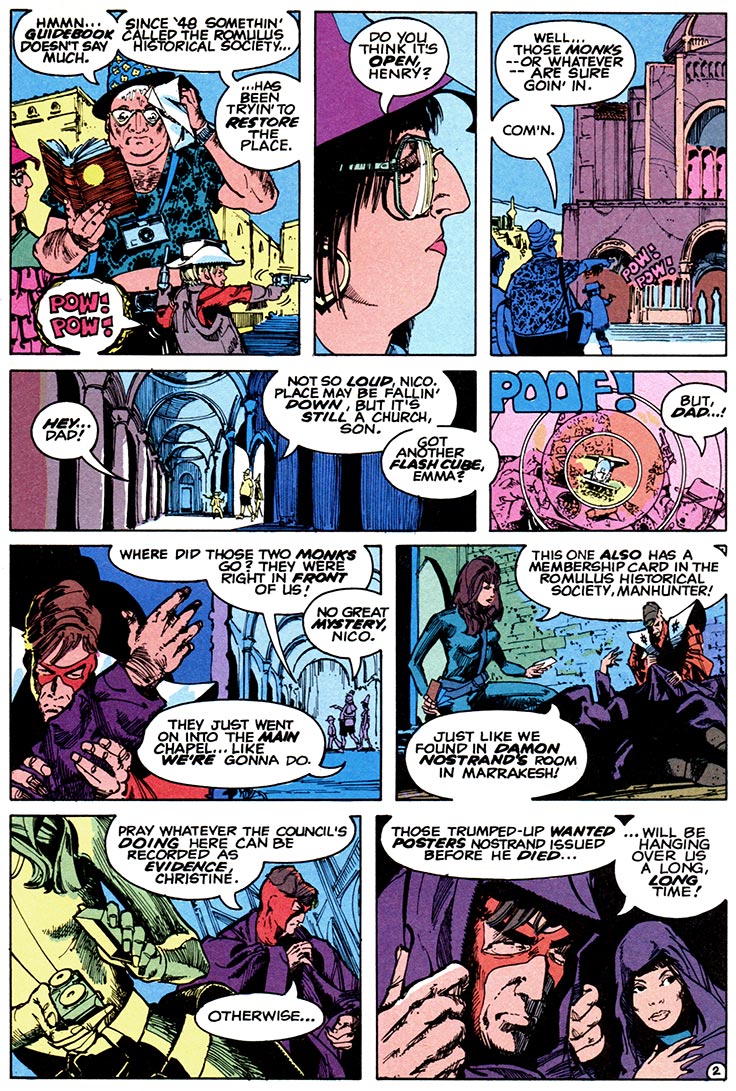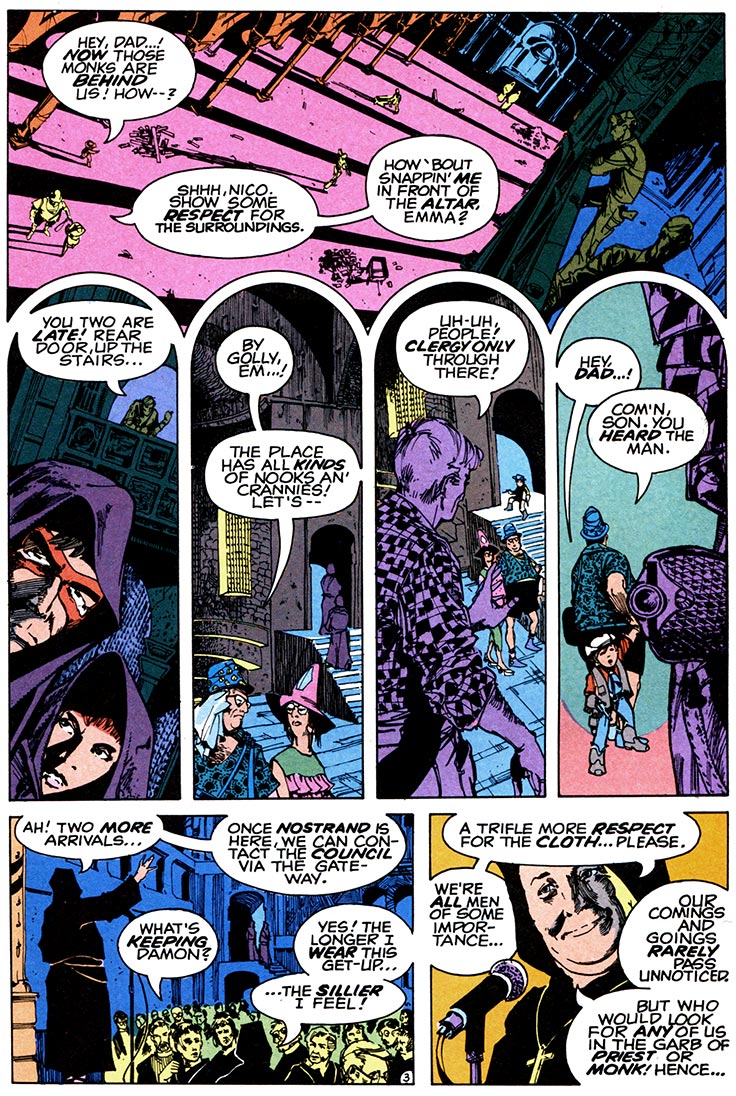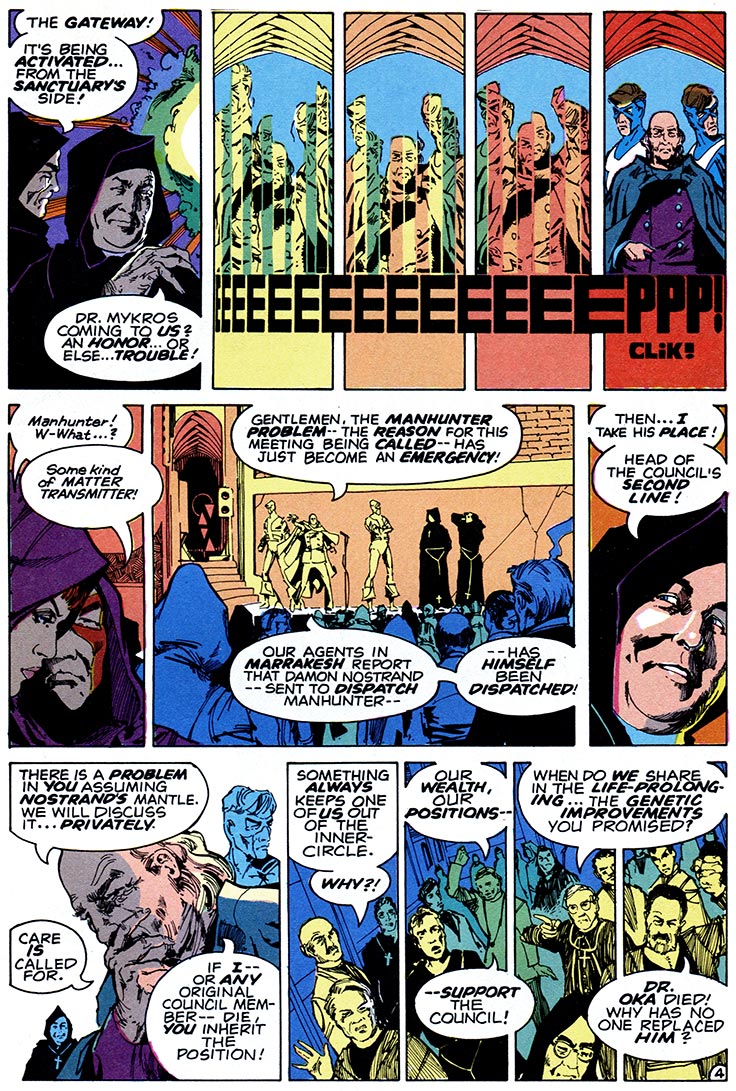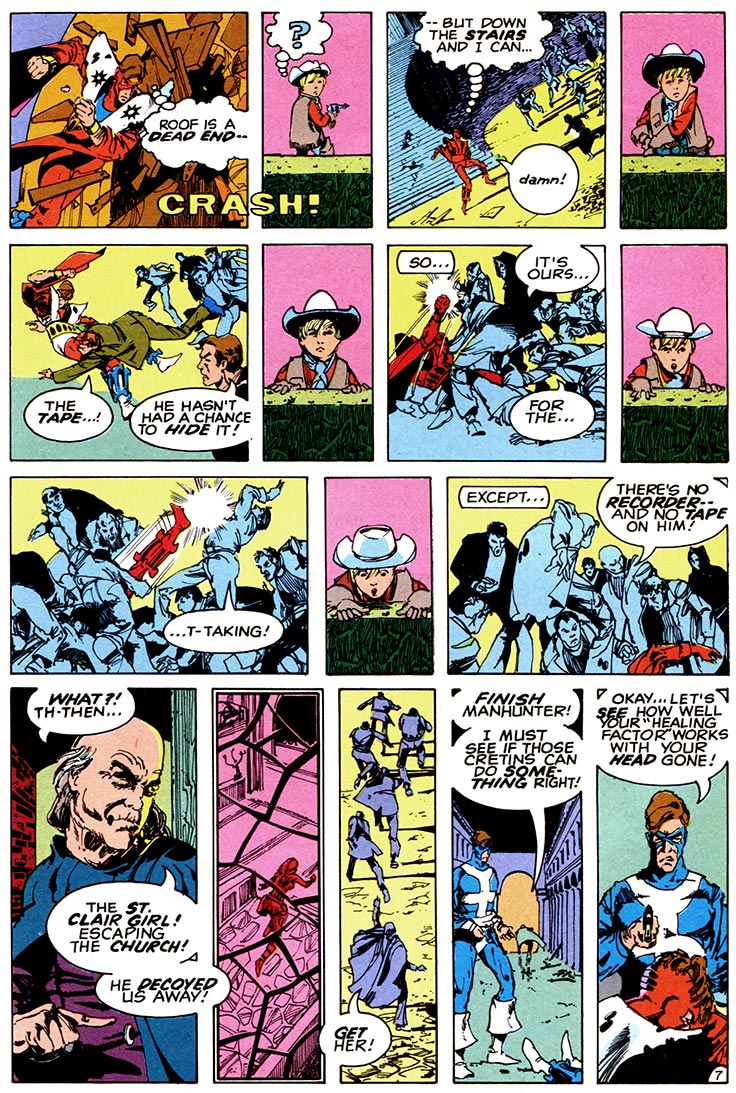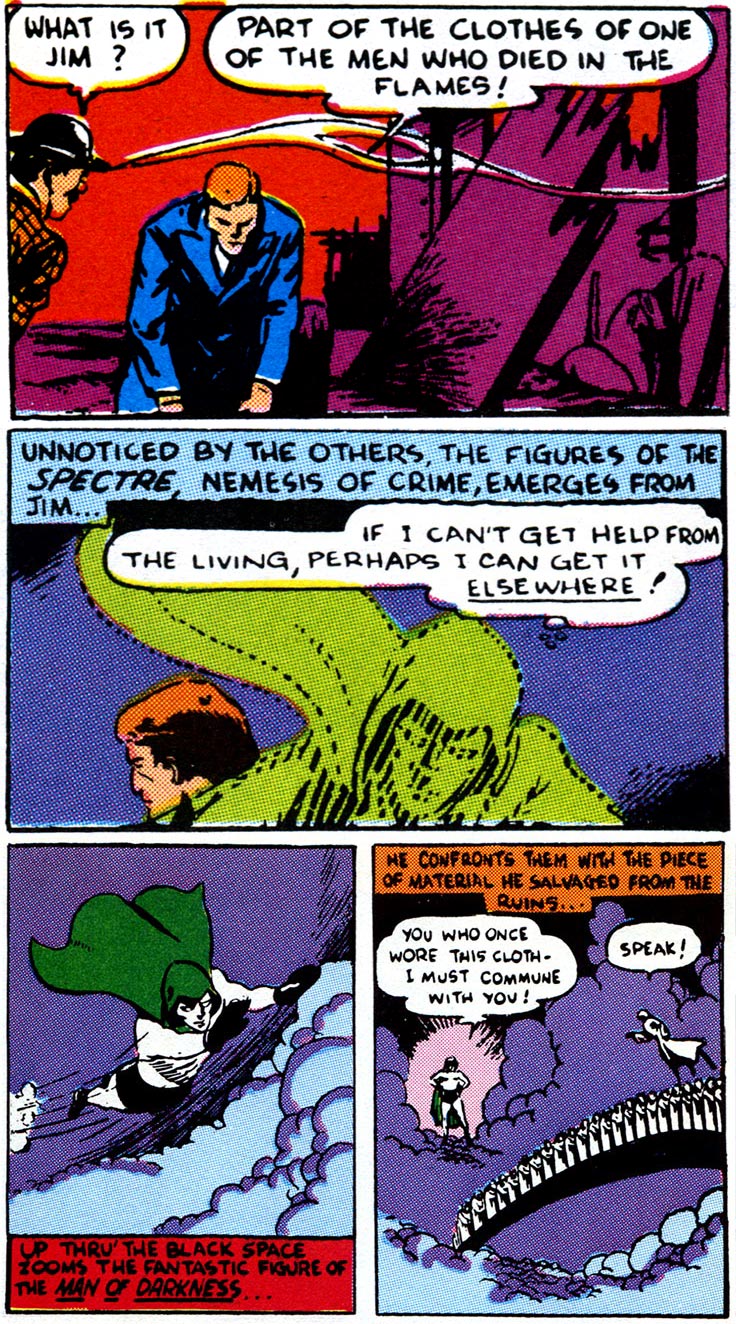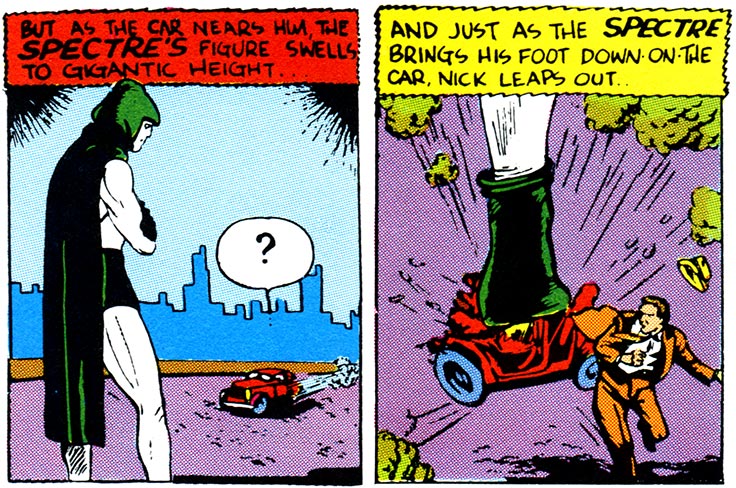when facing off against the legendary bat-man, it helps to be just a little crazy ..."the case of the chemical syndicate", detective comics #27, may 1939
"professor hugo strange", detective comics #36, feb 1940
"the joker returns", batman #1, spring 1940
"the murders of clayface", detective comics #40, jun 1940
"wolf, the crime master", batman #2, summer 1940
"the case of the joker's crime circus!", batman #4, winter 1941
"the clock maker!", batman #6, aug-sep 1941
"the brain burglar!", detective comics #55, sep 1941
"twenty-four hours to live!", detective comics #57, nov 1941
"a bat-death for batman!", batman #221, may 1970
"night of the reaper", batman #237, dec 1971
"forecast for tonight... murder!", detective comics #420, feb 1972
"open-and-shut case!", detective comics #425, jul 1972
"deathmask!", detective comics #437, nov 1973
then again, anyone who'd face off against every adrenaline-fueled psychopath that crawled out of the woodwork might be just a little crazy too ..."the white whale!", batman #9, feb-mar 1942
(stories by bob kane, bill finger, frank robbins, denny o'neil & archie goodwin; art by bob kane, jerry robinson, george roussos, irv novick, neal adams, dick giordano, frank robbins, don heck & jim aparo)
Wednesday, January 31, 2018
mad men
Sunday, April 08, 2012
Monday, April 02, 2012
the bat-pun robin left unsaid
from 2007's nightwing[1] annual #2 (an "annual" that curiously took ten years to follow nightwing annual #1):(story by marc andreyko, art by joe bennet and jack jadson)understandably, robin chooses to suffer in silence, so i'll just have to say it for him: "holy hard-on, batman! i've gotta raging bat-boner!"
1) "nightwing" is the superhero identity assumed by dick grayson in 1984 after he quit wearing the short shorts and pixies boots.
Wednesday, December 07, 2011
one-way trip
from dc comics' wasteland #1 (1987), artist david lloyd, who, with writer alan moore, gave us "v for vendetta" and who will literally blow your mind with the dopest dope you'll ever toke ...... or so they say.
(story by john ostrander and del close, art by david lloyd, color by lovern kindzierski)
Wednesday, March 31, 2010
dick giordano, r.i.p.
(you last saw dick giordano's artwork on this blog in my november post "a great escape")
in these days where just about every press release touts everyone as an industry great, dick giordano was truly a comic book legend. while primarily known as one of the great all-time inkers (often pairing with neal adams, another legend), giordano also spent 10 years as DC comics's vice president/executive editor, a position he held from 1983-1993, arguably the most critical time frame in DC comics history. he oversaw "crisis on infinite earths" and the rebooting of the entire universe and its iconic characters, one of the more ambitious moves ever taken by a major comic book company. he was also there when DC launched their vertigo line of mature readers comics, possibly the most influential move DC comics has made in the modern age.
back in elementary school, when i was just getting hooked on comics, dick giordano, with the aid of the abovementioned neal adams and irv novick, was helping usher in the more sophisticated artwork of dc's modern age, which also moved batman out of the batcave and shipped robin off to college, as explained by bruce wayne in 1969's "one bullet too many":from the following month's "the secret of the waiting graves":
(stories by frank robbins and denny o'neill, art by dick giordano, irv novick and neal adams)
Wednesday, January 06, 2010
meet paul kirk
nairobi, kenya, august 1974:archie goodwin, writer, may 1984:
in the spring of 1973 i was a freelance writer/editor for dc comics, packaging three war titles for them. the publisher, carmine infantino, wanted me to take a try at editing detective, which was then in a period of low sales. these are not bad circumstances under which to inherit a title, contrary to how it may sound. one's encouraged to tinker, to tamper, and try new things rather than preserving the status quo. if anything improves, you're a hero; if nothing works out, well ... the book wasn't selling that well anyway. to demolish any possible suspense: i didn't become a hero. there was no turnaround in detective's sales, but there was, as they say in show business, some artistic success. manhunter was responsible for most of it. with my lead character, batman, appearing in two other titles besides mine and with an already well-established stylistic foundation, i couldn't do anything too radical. he couldn't suddenly appear in a brand-new costume, exhibit vastly different powers, or (with any credibility) burn the cape and cowl, swearing to be the batman no more; none of the standard let's-try-to-get-their-attention-and-pump-some-more-juice-in-this-rag ploys. i didn't even have that second-best option of killing off a beloved supporting character; they'd already done that to alfred years before (rest easy; death was only temporary). any big change in the book, then, had to come in the back-up feature. what i wanted was something that would fit (however loosely) within the "detective" format of the book, but contrast vividly in terms of mood, character, and artistic style with the lead stories; something that would nail the eye of the casual browser and maybe eventually develop a following of its own, bringing the book a few readers beyond the dyed-in-the-wool batman fans.
spanning only seven episodes (six 8-page back-ups and a climactic 20-page lead story team-up with series headliner batman) from july 1973 to august 1974, the "manhunter" series resurrected a WWII costumed adventurer not seen in thirty years and mashed-up superheroes, sci-fi, martial arts and international espionage during its short run, all while accumulating a fistful of top honors from the short-lived academy of comic book arts:
1973 best writer (archie goodwin) 1973 best individual short story, dramatic ("the himalayan incident")
1973 outstanding new talent (walt simonson, tied with jim starlin)
1974 best individual short story, dramatic ("cathedral perilous")
1974 best individual story ("gotterdammerung")
1974 best writer (archie goodwin)
though only at the very beginning of his career, overnight sensation walt simonson's distinctive storyboarding, composition, linework and adventuresome use of typography and sound effects had become firmly established.
(art by walt simonson, story by archie goodwin)the series has been reprinted in whole twice: "manhunter #1" (1984) and "manhunter: the special edition" (1999).
Wednesday, December 16, 2009
things you can do in dc when you're dead
earth's most powerful hero is neither dc comics star attraction superman nor his closest competitor (in terms of both abilities and promotion) captain marvel. no, that honor belongs to the less well-known figure called the spectre, who distinguishes himself from all comers by being not merely a super-man, but rather a super-ghost.after being brutally murdered by gangsters, "hard-fisted" detective jim corrigan returned to crime-infested cliffland (cleveland?) sporting a chalky pallor, green cloak and trunks and a psychedelic array of powers — many on rapid-fire display in this single episode, "the tenement fires", from 1940's all-star comics #1.
besides the standard-issue ghostly powers of flight, invisibility and intangibility, the spectre's multipresence — the ability to be in two or more places at once — allows jim corrigan to examine clues on earth while his alter ego interviews victims just outside the pearly gates:
his clairvoyance allows him to sense "tremendous evil afoot":
no power rings or magic spells here — his sheer will alone defines omnipotence:
making levitation, of course, mother-and-child's play:
as well as transmutation — here turning fire to ice:
and size-shifting:
and telepathy — reading mens' minds — literally:
coolest of all, his immortality gave his writers the unique luxury of being able to brutally murder his alter ego again and again, on a regular basis:
and what's a vengeful spirit without an evil eye — looks that can literally kill?(art by bernard baily, story by jerry siegel)



























